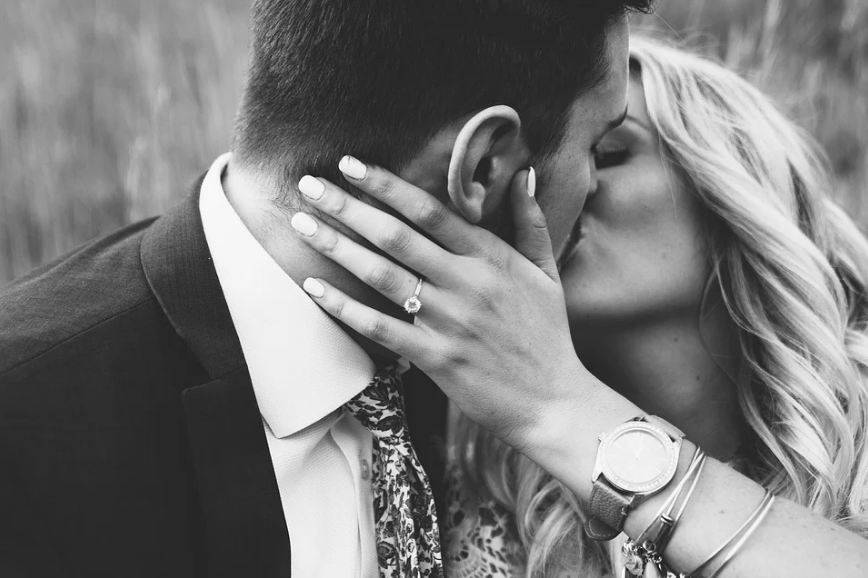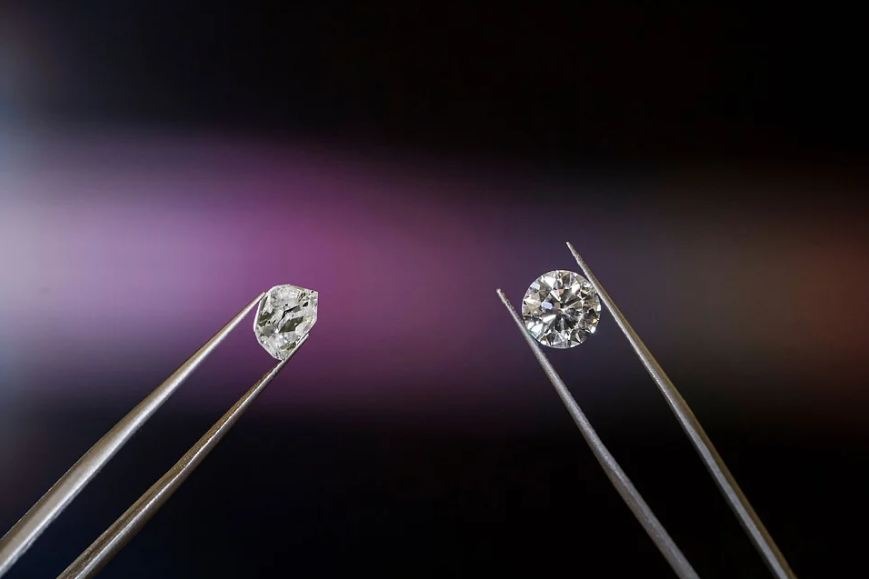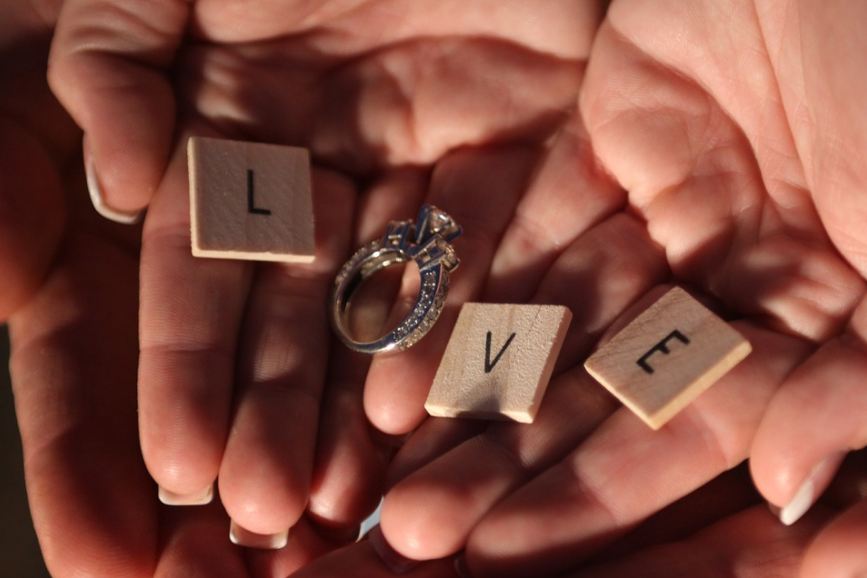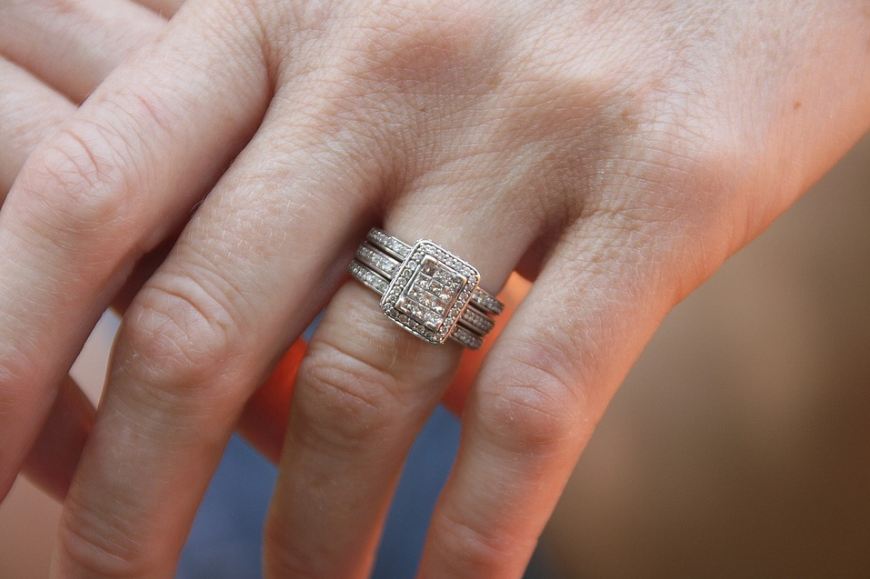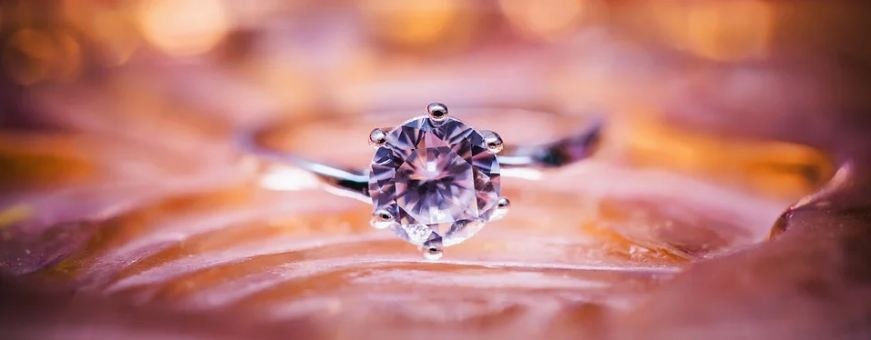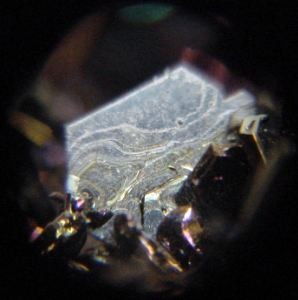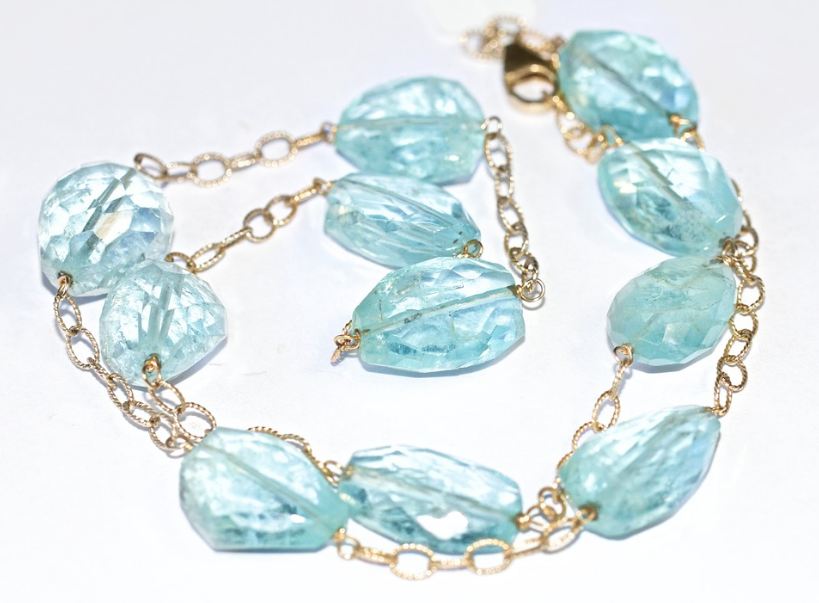A wedding is one of the most important events for almost all of us, as it is during this occasion that we will see our loved ones or ourselves go to the next chapter of our lives, which is to start a family with your husband or wife. However, before the wedding, there is a process that the couple should undertake after one of them proposes, and that process if called “engagement.” An engagement is a period of time wherein couples will have to test their relationship and see if they are suitable for marriage, and the test can come in the form of living together for months or years to know each other more.
In order to initiate an engagement, one person in the couple must plan a “proposal,” and this proposal would require the person to show an engagement ring and ask the partner for his or her hand in marriage. There are some people that would often confuse an engagement ring and wedding ring as the same, but those two are entirely different since they are symbols for two different occasions. For this guide, we will be focusing on helping finding the perfect engagement ring for your proposal. Included in this guide are tips on choosing a band and a diamond for the ring, as well as some other tips in figuring out the suitable length, width, and diamond shape for your partner’s hand.
Choosing a Diamond
Choosing a diamond for the engagement ring is not easy, as there are certain steps that you need to follow in order to find the perfect center piece for the ring. Luckily, many experts created the “Four C’s of Diamonds,” which is a guide on how to determine the best diamond for different types of jewelry. Here are some details regarding the four C’s of diamonds.
Carat
A diamond’s carat shouldn’t be confused with gold’s karat, as the carat of the diamond is used to determine the weight and the sizes of the material. Of course, the larger diamonds (5.00ct for diamond sellers) are considered to be the rarest and most expensive out of all sizes, but the large diamonds aren’t typically used for engagement rings. The most common size and weight of diamonds for engagement rings is 1.2 carats, but there are some that prefer 1.08 for a lighter feel and cheaper price. If you want to find out the dimensions of each common carat for diamonds, here is a list of diamond carat and their sizes by millimeters.
- 25ct – 4 x 4
- 50ct – 5 x 5
- 75ct – 5.7 x 5.7
- 00ct – 6.4 x 6.4
- 50ct – 7.4 x 7.4
- 00ct – 8 x 8
- 00ct – 9.3 x 9.3
- 00ct – 10.2 x 10.2
- 00ct – 11 x 11
Color
Color refers to the shade or tint of the diamond, which can often appear yellowish depending on the grade. The Gemological Institute of America or GIA created a table that rates diamond by their color, which goes from D to Z. Diamonds that are rated D or near it are colorless to near colorless, while diamonds that have a K to Z rating would have a shade of yellow to them. The most desirable diamonds would often have a D, E, or F rating, but those can be quite expensive in the market. For engagement rings, most people would settle with diamonds that have a G to J rating, which is still considered colorless but not flawless.
Cut
A diamond’s cut determines how well the gemstone can reflect the light that shines on top of it. Diamonds that have an “Excellent” cut would normally reflect light back to its original location, while diamonds with a “Good” cut would reflect light slightly to the left or right but still upwards. For the diamonds with a “Fair” cute, it would reflect light to the side but slightly upwards, while those with “Poor” cut will reflect light to the side. The “Very Poor” cut diamonds would reflect light to the bottom, although the light still moves upwards. Obviously, the most desirable diamond has an Excellent cut, but similar to other C’s on this guide, the higher the grade, the more expensive it is.
Clarity
Clarity refers to how clear the diamond looks, and those that have high grade in clarity would have lesser blemishes, scratches, and flaws. Diamonds with flawless surfaces would often fetch for more money in the market, as it is rare for diamonds to have no blemishes despite being one of the hardest materials on Earth. For engagement rings, it is common for people to choose diamonds with lesser clarity, as the small size of the center piece for the rings wouldn’t really show too much blemishes. So, clarity shouldn’t really be an issue for engagement rings, but if you want the ring to be flawless, you can opt to get a diamond with high clarity, although you would need to be prepared to pay a hefty price.
Choosing a Band
Choosing a band where the diamond will be place is just as important as picking the centerpiece for the engagement ring, as it would determine the overall look of the ring and how it matches well with the diamond, and it would also determine its durability and how secure the ring will be on the wearer’s finger.
A band is usually made of precious metals, but your choice of metal would depend on how you want it to look and how it would fit well with your partner’s style. If he or she has a simpler style of clothing, your partner may tend to favor the more monotone metals that don’t really offer striking colors. On the other hand, if your partner is the more fashionable type when it comes to clothing styles, then he or she may like the more eye-catching metals that have a pop of color in them.
There are two popular types of metal that is used for engagement ring bands, and these types are platinum and gold. Let us take a look at some details about these metal types and see their pros and cons.
Platinum
Platinum is arguably the most expensive type of metal out of the two popular choices, as it is considered to be five times rarer than gold. Its hefty price tag in jewelry stores is also attributed to its durability, as it won’t easily get scuffs or dings and its color won’t fade over time. In addition, platinum is often purer than gold when used in jewelry, hence the reason why it is so durable even after years of wear.
Despite being expensive, platinum is the most popular choice for many as it presents a simpler appearance that allows the diamond’s beauty to be more prominent on the ring. Furthermore, since it is stronger than gold, platinum bands tend to be more favorable for those with active lifestyles that want to wear the engagement ring almost every day. Its density is also a highlight, as it allows the metal to have a more firm and secure grip on the diamond compared to gold, which could often bend pretty easily depending on its grade.
However, the downside to platinum is that for most people, it doesn’t look as elegant as gold, and it would often appear as silver from afar. But this downside doesn’t really matter for people that want a simpler engagement ring that doesn’t have many bells and whistles.
Gold
Gold is regarded as the most versatile metal compared to platinum, as it can be applied in a variety of jewelry. Although it can be used as a band for engagement rings, it is not as commonly utilized as platinum. The purest gold you can get for an engagement ring is 24 karats, and karats determine how much gold is found in the metal used to make the band. Gold is divided in 24 parts, and “24 karats” mean that the gold used for the band is made of 24 out of 24 gold parts, which indicates that there are no other types of metal used to make the engagement ring band.
Unfortunately, even though 24-karat (24K) gold is considered precious by many, pure gold is often too soft to be considered a suitable partner for an engagement ring’s piece of diamond, which is arguably one of the hardest materials on Earth. As such, many people that want gold engagement rings would prefer 18K and even 10k gold in order for it to be more suitable for the diamond piece. However, these grades that have lesser gold would tend to have a duller shade of yellow or gold, making them less desirable in terms of appearance.
White Gold
Besides yellow, there are also other colors of gold. The second most popular color of gold is white, which has a color that looks similar to silver and platinum. White gold achieves is silvery color because its plating that is made of rhodium, a hard metal that is more expensive than platinum, although its price is lower in white gold since it is only used for plating.
Because of the rhodium plating, white gold tends to be more durable than yellow gold since rhodium can resists tarnishes, blemishes, and scratches. Unfortunately, for white gold jewelry that have thinner rhodium plating, the plating would often wear fast, so you would need to consult a jeweler for re-plating if you are wearing the ring frequently.
Rose Gold
Another popular color of gold is rose gold, which is becoming more and more well-known thanks to its use as a limited edition or special color for trendy gadgets like the Apple iPhone. The unique color of rose gold is achieved by combining copper alloy with yellow gold, and because gold is combined with another metal to produce the rose pink color, there is no 24-karat rose gold. The highest grade of rose gold you can get in the market is 22 karats, and that grade produce a yellower rose gold color.
Rose gold is usually popular among millennials and the younger generation, thus making it a more modern color instead of classic like yellow gold and even platinum. For some people, rose gold pairs well with diamonds, although there are a few that will say that the eye-catching rose gold color often overpowers the brilliance of the diamond piece.
Length-to-Width Ratio
The length-to-width ratio of a diamond determines how elongated and how narrow the diamond would look in the ring. This ratio is determined by dividing the length of the diamond with its width (calculated by the GIA), thus indicating the difference between the diamond’s length and width. Diamonds with a higher length-to-width ratio would tend to have a narrower appearance, while those with lower ratio would have a “square” or symmetrical look. The “perfect square” ratio for diamonds is 1.00, but 1.01 to 1.09 are still relatively square in appearance.
Diamonds found in engagement rings would usually have a more square shape in order for it to have a balanced weight distribution while it is held or gripped by the metal band. However, there are some people that prefer are elongated or narrower diamond piece in their engagement rings, but these higher ratio diamonds would typically be partnered with a thicker band for better weight distribution.
Diamond Shape
Diamonds can come in different shapes, and the shape that you choose to place in the engagement rings really depends on your personal preference. There is no “wrong” shape of diamond for engagement rings, but there are some shapes that are more popular than the others. Here are some of the most common shapes of diamonds found in engagement rings.
Cushion
Cushion is arguably the most popular diamond shape for engagement rings, as it has a perfectly square shape depending on its length-to-width ratio. The cushion shape is one of the simpler diamond shapes that are suitable for engagement rings because of its classic appearance. This shape can also be found in other types of jewelry, although they are usually more prominent in rings because of its symmetrical look.
Radiant
Radiant has a similar shape to cushion, although it has less round edges and a different design on its interior. In addition, the radiant shape is not perfectly square compared to the cushion, as it normally has a higher length-to-width ratio that makes it look more rectangle than square. The radiant shape is a classic, but its style is much more suitable for vintage ring designs.
Oval
Another popular shape is the oval, which is rounder than the first two shapes and is also suitable for engagement rings. Much like the radiant shape, the oval doesn’t really have a perfectly round ratio, as its most common ratios are between 1.30 and 1.50. Because of its rounder shape, the oval diamond would have a wider coverage than the cushion shape, so it is better if it is incorporated in the single stone design instead of the multiple diamonds design. However, the higher ratio oval shapes would also be suitable for adding side stones since they are narrower.
Pear
Pear is a rounded shape like oval, but it is asymmetrical since its upper portion is wider than its lower portion. Similar to oval, the pear shape has a high length-to-width ratio in order to make its shape more pronounced. However, this shape is uncommon for engagement rings, as they don’t really offer balanced weight distribution and its shape doesn’t really look appealing on the fingers. This shape is often used for other types of jewelry like necklaces and earrings, where it is often placed as the center piece.
Emerald
Emerald-shaped diamonds have a similar shape to radiant, but they feature a different interior design that makes it look more like a perfectly cut emerald than a diamond. In order for its intricate design to be showcased properly, the emerald shape diamond is commonly narrow, with the most common having a 1.45 length-to-width ratio.
Alternatives to Diamonds
If you cannot afford a diamond, you can choose to get an alternative that has similar characteristics and appearance to the hard gemstone. Here are some of the best alternatives to diamond.
Moissanite
Moissanite was a crystal that was first discovered by French scientist Henri Moissan in 1893. During the initial inspection of the crystal, Moissan and other scientists thought that it is a piece of diamond, but it was soon discovered that has it has a different chemical composition, thus becoming a new gemstone. In addition, it is also the second hardest mineral on Earth next to diamond. Because of its similarities to diamond, moissanite has been used as alternative to the expensive gemstone since it looks just like a diamond from afar.
Aquamarine
Aquamarine is another great alternative to diamond, although this crystal has a bluish tint to it compared to the yellowish to clear color of the expensive gemstone. The aquamarine crystal is not as durable as moissanite and diamond, so a person must apply constant care to the ring it is attached to.
Morganite
Morganite is a gemstone that has a bronze tint that looks amazing when paired with a rose gold band since they have almost the exact same color. However, this crystal may not look as appealing when pair with yellow gold or platinum, so this is exactly not a great alternative to diamond. If you want the engagement ring to have a rose gold band but can’t afford to get a diamond, you can opt to get a morganite that still looks stunning while also pairing perfectly with the rose gold color.
Alternatives to Gold and Platinum
While gold is relatively cheaper in today’s era, there are still a number of people that cannot afford the said metal. So, for those that are looking for alternatives to gold and platinum bands, there are some good metals that mimic the color and appearance of the two expensive types of metal for a cheaper price. Here are some good alternatives to gold and platinum.
Titanium

Stainless Steel
Stainless steel is considered the cheapest alternative, as it is more abundant in the market than any other types of metals beside regular steel. Much like titanium, stainless steel is usually silver in color, which allows it to mimic the appearance of platinum. Furthermore, since it is “stainless,” this metal is resistant to oxidation or rusting. Unfortunately, stainless steel bands tend to be heavier than platinum, so you would need to get used to its weight if you want to wear it constantly.
Cobalt
Cobalt was once exclusively used for industrial purposes, but it has now been used for jewelry in recent years because of its durability. Cobalt is estimated to be four times harder than platinum, which is an amazing feature considering that platinum is already a durable metal. Another great feature of cobalt is that you can size them to your preference unlike titanium.
Budget
Not all people have the money to buy the most expensive engagement ring we could find, so it is important for most of us to mind the budget when it comes to buying engagement rings. Here are the best budget options from low tier to high tier.
Low Tier Best Combination
For those that have a tight budget, the best combination for materials on your engagement ring are a low grade diamond based on its cut, clarity, and color and a band made of 10K to 18K yellow gold. For the diamond, the lowest grade may look undesirable, so you can aim to purchase one that has an acceptable appearance. As for the band, the 10K to 18K gold band may not look as yellowish as pure gold, but they are tougher and more durable, thus making them a suitable band for low tier engagement rings. In addition, you can also select an alternative gemstone to diamond to decrease the price of your engagement ring, although selecting an alternative also decreases the value of the piece of jewelry.
Mid-Tier Best Combination
The mid-tier engagement ring may be the most common combination out of the three, as they can achieve the perfect balance between affordability and elegance provided by high tier diamonds and bands. For this tier, you can go for a diamond center piece that has a mid-tier grade in cut, clarity, and color, and you can opt for either a white gold or a platinum band. A platinum band may cost you more than getting a white gold band, but the upgrade will be worth it since the former is much more durable and doesn’t require as much maintenance as the latter.
High Tier Best Combination
If you have the budget to buy the most exquisite engagement ring, you can just choose the highest quality diamonds and bands that are available in the market. You can select the finest diamonds with high clarity, perfect cut, and a colorless appearance, and then you can pair it with the shiniest platinum band that you can afford. You can also choose to add side stones with the center piece diamond if you want to make the engagement ring to look more elegant.
By reading this guide, you can see that choosing a diamond and a band for your partner’s engagement ring is difficult since you would need to know and understand the different intricacies of picking the materials and making the piece of jewelry. So, it is better for you to do some more research before decide on the materials that will be used to make your engagement ring, as this can be a once-in-a-lifetime decision that you shouldn’t take for granted.

